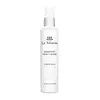What's inside
What's inside
 Key Ingredients
Key Ingredients

 Benefits
Benefits

 Concerns
Concerns

 Ingredients Side-by-side
Ingredients Side-by-side

Hyaluronic Acid
HumectantHydrolyzed Sodium Hyaluronate
Skin ConditioningSodium Hyaluronate
HumectantSodium Hyaluronate Crosspolymer
HumectantHydroxypropyltrimonium Hyaluronate
C12-13 Alkyl Glyceryl Hydrolyzed Hyaluronate
Oryza Sativa Bran Water
MaskingAcetyl Hexapeptide-8
HumectantDipalmitoyl Hydroxyproline
Skin ConditioningPalmitoyl Pentapeptide-4
Skin ConditioningPalmitoyl Tripeptide-5
Skin ConditioningCeramide EOP
Skin ConditioningCeramide NP
Skin ConditioningButyrospermum Parkii Butter
Skin ConditioningPhospholipids
Skin ConditioningSoluble Collagen
HumectantDipotassium Glycyrrhizate
HumectantSuperoxide Dismutase
AntioxidantBeta-Glucan
Skin ConditioningSodium PCA
HumectantChitosan
Pullulan
Sorbitol
HumectantMacrocystis Pyrifera Extract
Skin ConditioningCamellia Sinensis Catechins
AntioxidantCaprylyl Glycol
EmollientEthylhexylglycerin
Skin ConditioningUndecylenoyl Glycine
CleansingCapryloyl Glycine
CleansingHyaluronic Acid, Hydrolyzed Sodium Hyaluronate, Sodium Hyaluronate, Sodium Hyaluronate Crosspolymer, Hydroxypropyltrimonium Hyaluronate, C12-13 Alkyl Glyceryl Hydrolyzed Hyaluronate, Oryza Sativa Bran Water, Acetyl Hexapeptide-8, Dipalmitoyl Hydroxyproline, Palmitoyl Pentapeptide-4, Palmitoyl Tripeptide-5, Ceramide EOP, Ceramide NP, Butyrospermum Parkii Butter, Phospholipids, Soluble Collagen, Dipotassium Glycyrrhizate, Superoxide Dismutase, Beta-Glucan, Sodium PCA, Chitosan, Pullulan, Sorbitol, Macrocystis Pyrifera Extract, Camellia Sinensis Catechins, Caprylyl Glycol, Ethylhexylglycerin, Undecylenoyl Glycine, Capryloyl Glycine
Water
Skin ConditioningC13-15 Alkane
SolventSqualane
EmollientPropanediol
SolventPolyglyceryl-5 Polyricinoleate
EmulsifyingBisabolol
MaskingCoco-Caprylate/Caprate
EmollientGlycerin
HumectantMagnesium Sulfate
Panthenol
Skin ConditioningGlyceryl Behenate
Emollient1,2-Hexanediol
Skin ConditioningButylene Glycol
HumectantHeptapeptide-7
Skin ConditioningAcetyl Sh-Hexapeptide-5 Amide Acetate
Skin ConditioningNicotiana Benthamiana Hexapeptide-40 Sh-Polypeptide-76
Skin ConditioningCeramide AP
Skin ConditioningCeramide EOP
Skin ConditioningCeramide NP
Skin ConditioningTremella Fuciformis Extract
HumectantAllantoin
Skin ConditioningOryza Sativa Bran Oil
EmollientArginine
MaskingGlycosphingolipids
EmollientPhytosphingosine
Skin ConditioningCholesterol
EmollientTetraacetylphytosphingosine
Skin ConditioningPolyglyceryl-6 Octastearate
EmulsifyingStearic Acid
CleansingCetearyl Alcohol
EmollientGlyceryl Glucoside
HumectantGlyceryl Stearate
EmollientHydrogenated Polydecene
EmollientHydrogenated Lecithin
EmulsifyingLecithin
EmollientXanthan Gum
EmulsifyingTocopherol
AntioxidantCarnosine
Skin ConditioningPotassium Sorbate
PreservativeSodium Benzoate
MaskingPhenoxyethanol
PreservativeCitric Acid
BufferingQuaternium-90 Bentonite
Mica
Cosmetic ColorantTriethyl Citrate
MaskingZinc Stearate
Cosmetic ColorantEthylhexylglycerin
Skin ConditioningGluconolactone
Skin ConditioningCalcium Gluconate
HumectantHydroxyacetophenone
AntioxidantWater, C13-15 Alkane, Squalane, Propanediol, Polyglyceryl-5 Polyricinoleate, Bisabolol, Coco-Caprylate/Caprate, Glycerin, Magnesium Sulfate, Panthenol, Glyceryl Behenate, 1,2-Hexanediol, Butylene Glycol, Heptapeptide-7, Acetyl Sh-Hexapeptide-5 Amide Acetate, Nicotiana Benthamiana Hexapeptide-40 Sh-Polypeptide-76, Ceramide AP, Ceramide EOP, Ceramide NP, Tremella Fuciformis Extract, Allantoin, Oryza Sativa Bran Oil, Arginine, Glycosphingolipids, Phytosphingosine, Cholesterol, Tetraacetylphytosphingosine, Polyglyceryl-6 Octastearate, Stearic Acid, Cetearyl Alcohol, Glyceryl Glucoside, Glyceryl Stearate, Hydrogenated Polydecene, Hydrogenated Lecithin, Lecithin, Xanthan Gum, Tocopherol, Carnosine, Potassium Sorbate, Sodium Benzoate, Phenoxyethanol, Citric Acid, Quaternium-90 Bentonite, Mica, Triethyl Citrate, Zinc Stearate, Ethylhexylglycerin, Gluconolactone, Calcium Gluconate, Hydroxyacetophenone
 Reviews
Reviews

Alternatives
Ingredients Explained
These ingredients are found in both products.
Ingredients higher up in an ingredient list are typically present in a larger amount.
Ceramide EOP is formally known as Ceramide 1 and Ceramide 1 A.
EOP stands for a linked Ester fatty acid, a linked Omega hydroxy fatty acid, and the Phytosphingosine base.
Ceramides are intercellular lipids naturally found in our skin. They bind dead skin cells together to create a barrier. The ceramides in our skin have the ability to hold water to keep our skin hydrated.
Ceramides are an important building block for our skin barrier. A strong skin barrier helps with:
If you would like to eat ceramides, sweet potatoes contain a small amount.
Read more about other common types of ceramides here:
Learn more about Ceramide EOPCeramide NP is a type of ceramide and formally known as ceramide 3.
Ceramides are intercellular lipids naturally found in our skin that bonds dead skin cells together to create a barrier. They are known for their ability to hold water and thus are a great ingredient for dry skin.
Ceramides are an important building block for our skin barrier. A stronger barrier helps the skin look more firm and hydrated. By bolstering the skin ceramides act as a barrier against irritating ingredients. This can help with inflammation as well.
If you would like to eat ceramides, sweet potatoes contain a small amount.
Read more about other common types of ceramides here:
Ceramide AP
Ceramide EOP
Ethylhexylglycerin (we can't pronounce this either) is commonly used as a preservative and skin softener. It is derived from glyceryl.
You might see Ethylhexylglycerin often paired with other preservatives such as phenoxyethanol. Ethylhexylglycerin has been found to increase the effectiveness of these other preservatives.